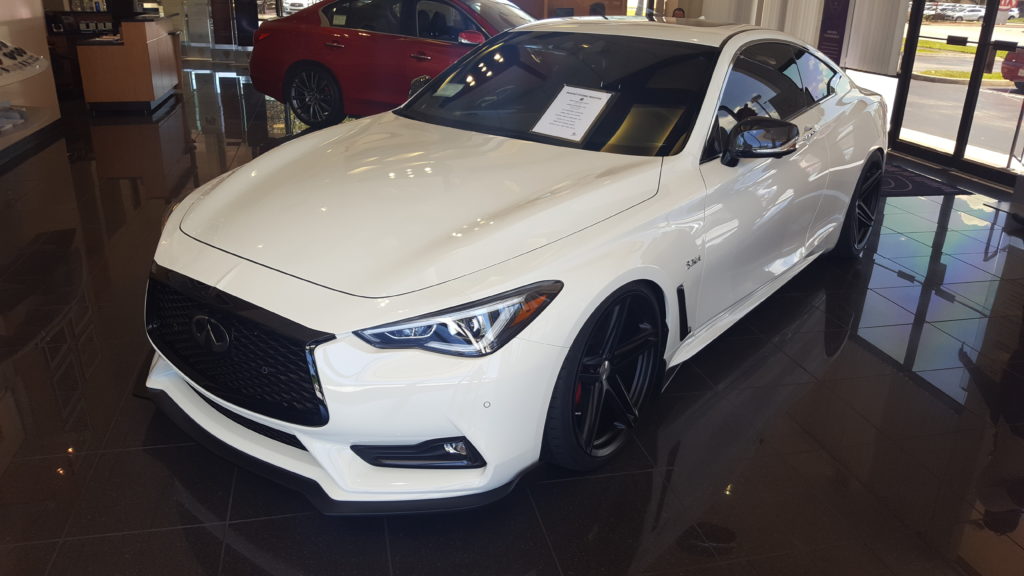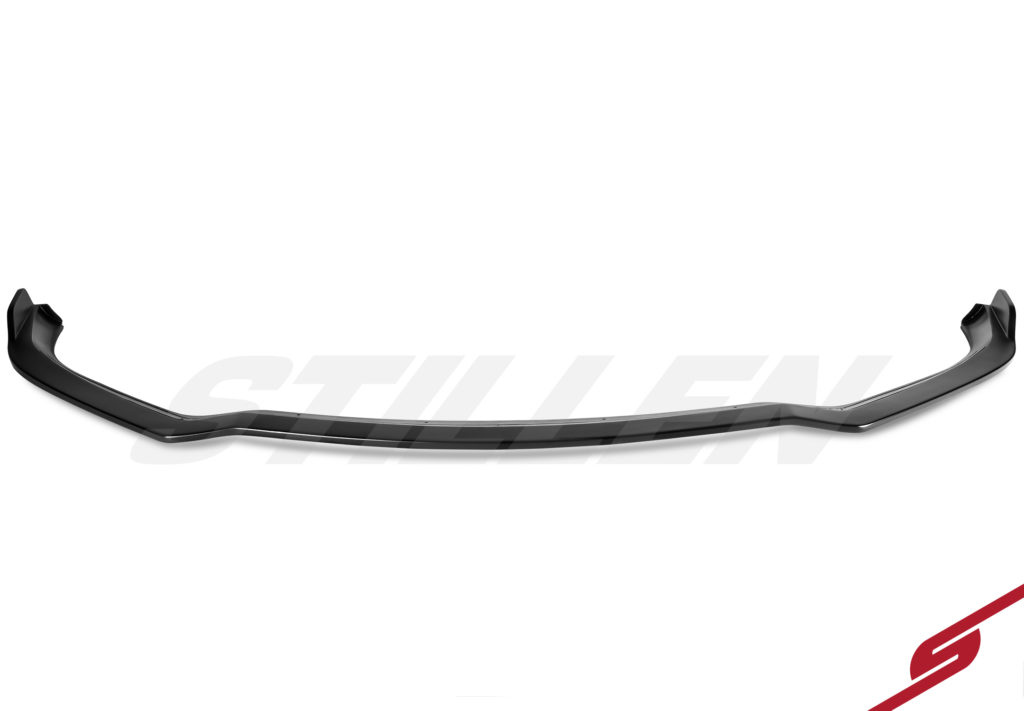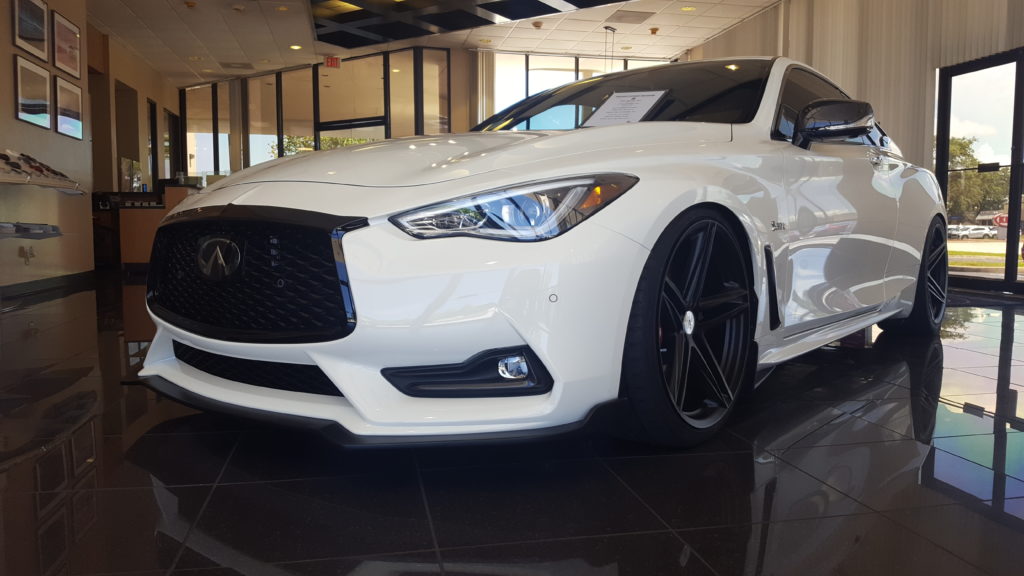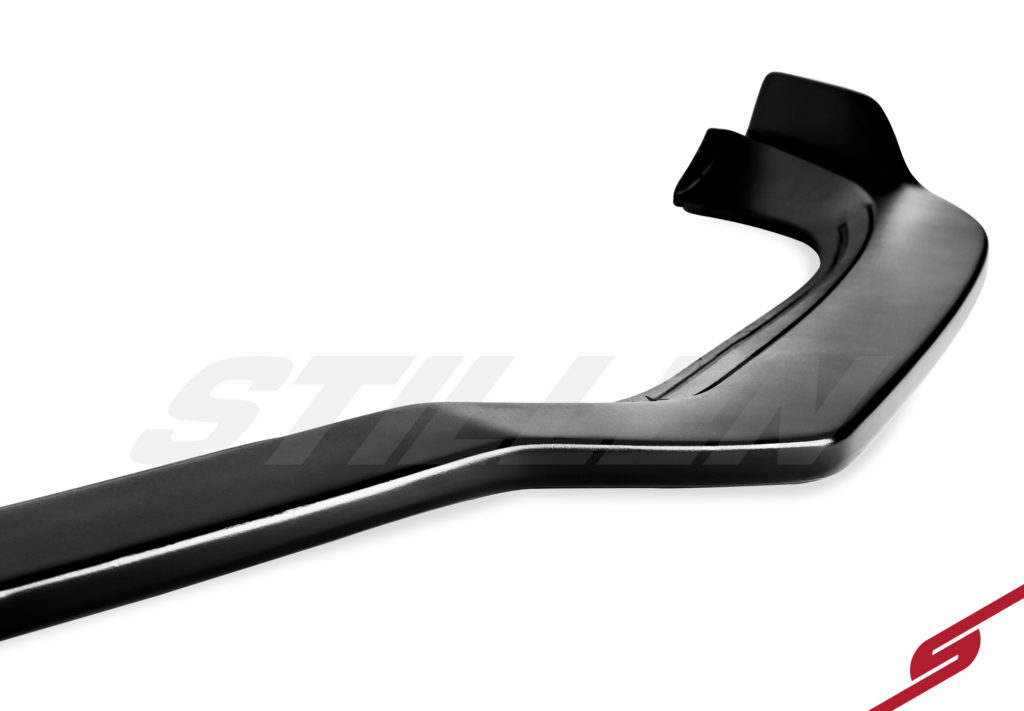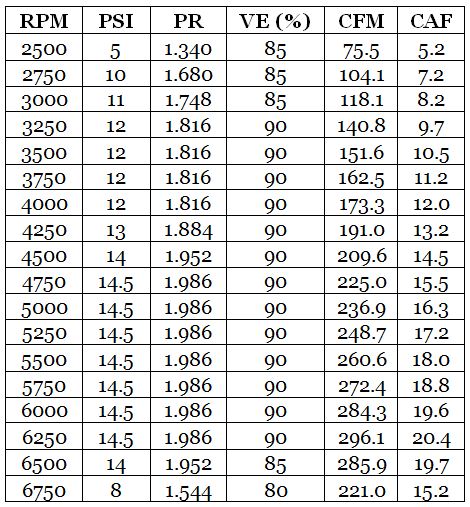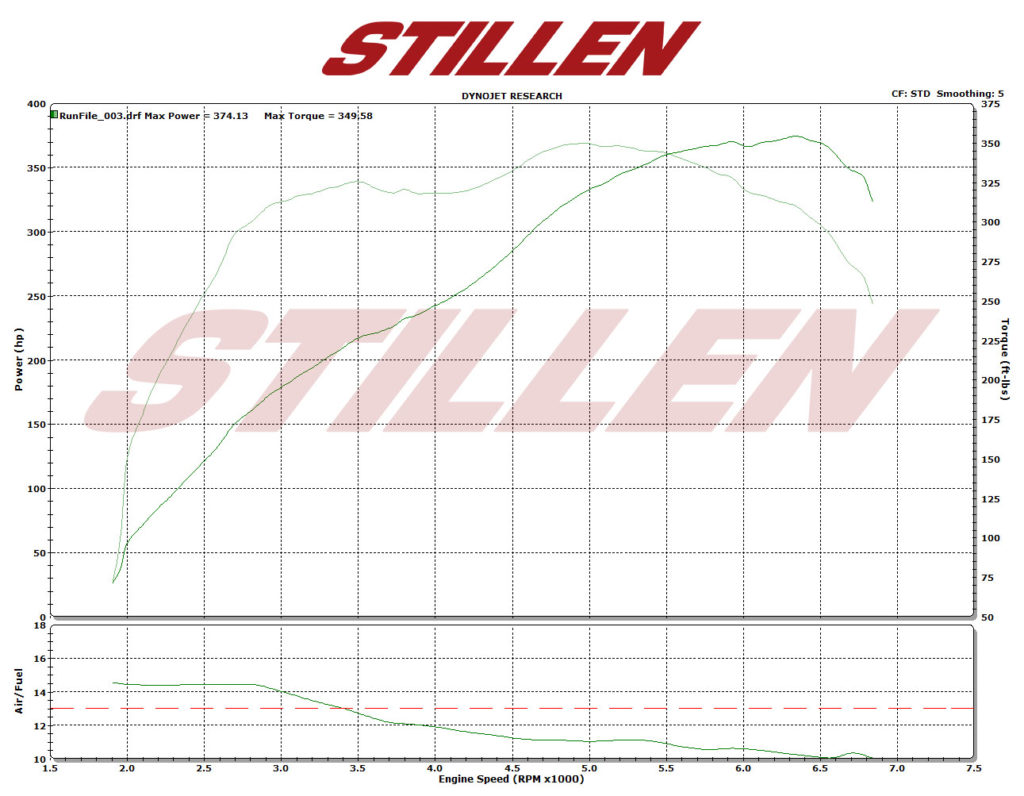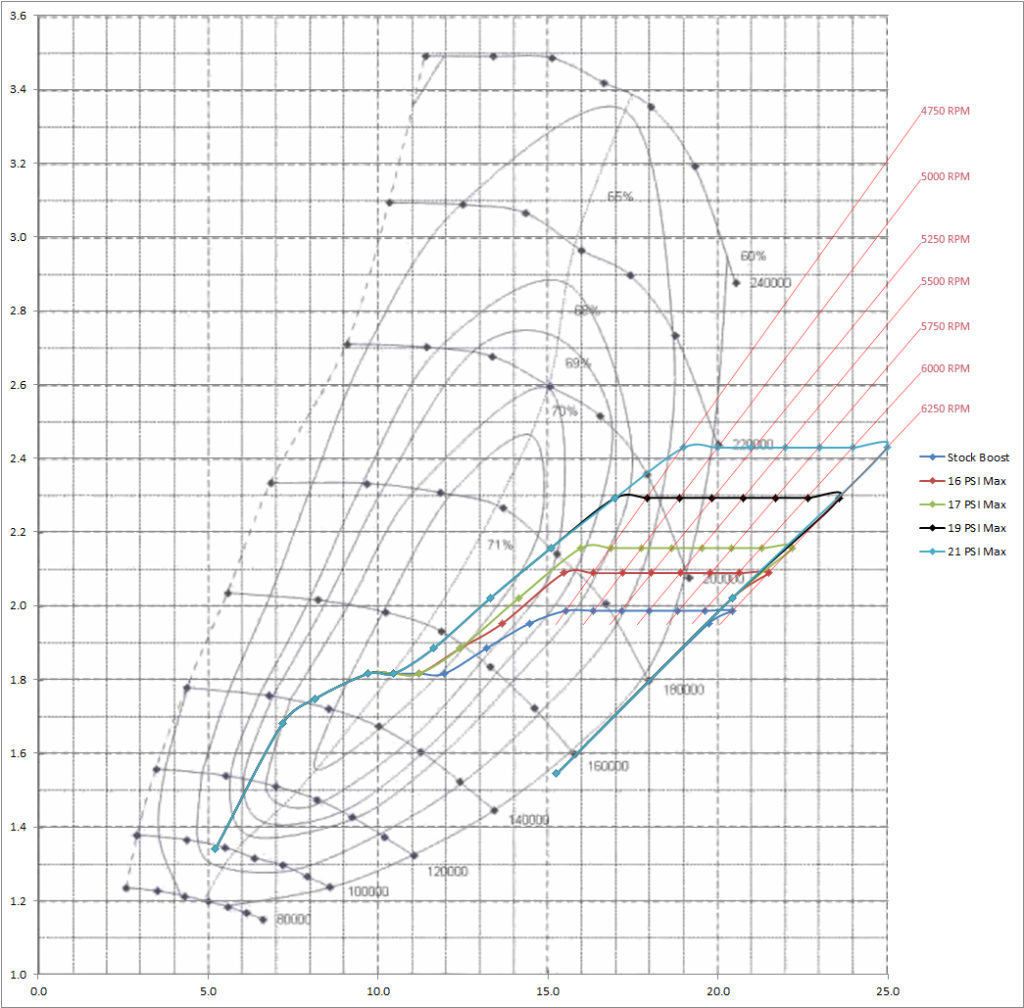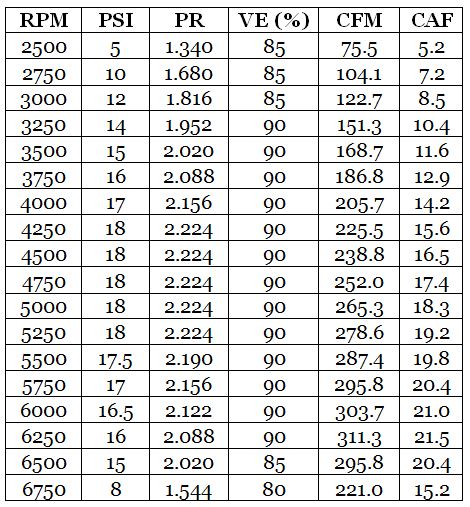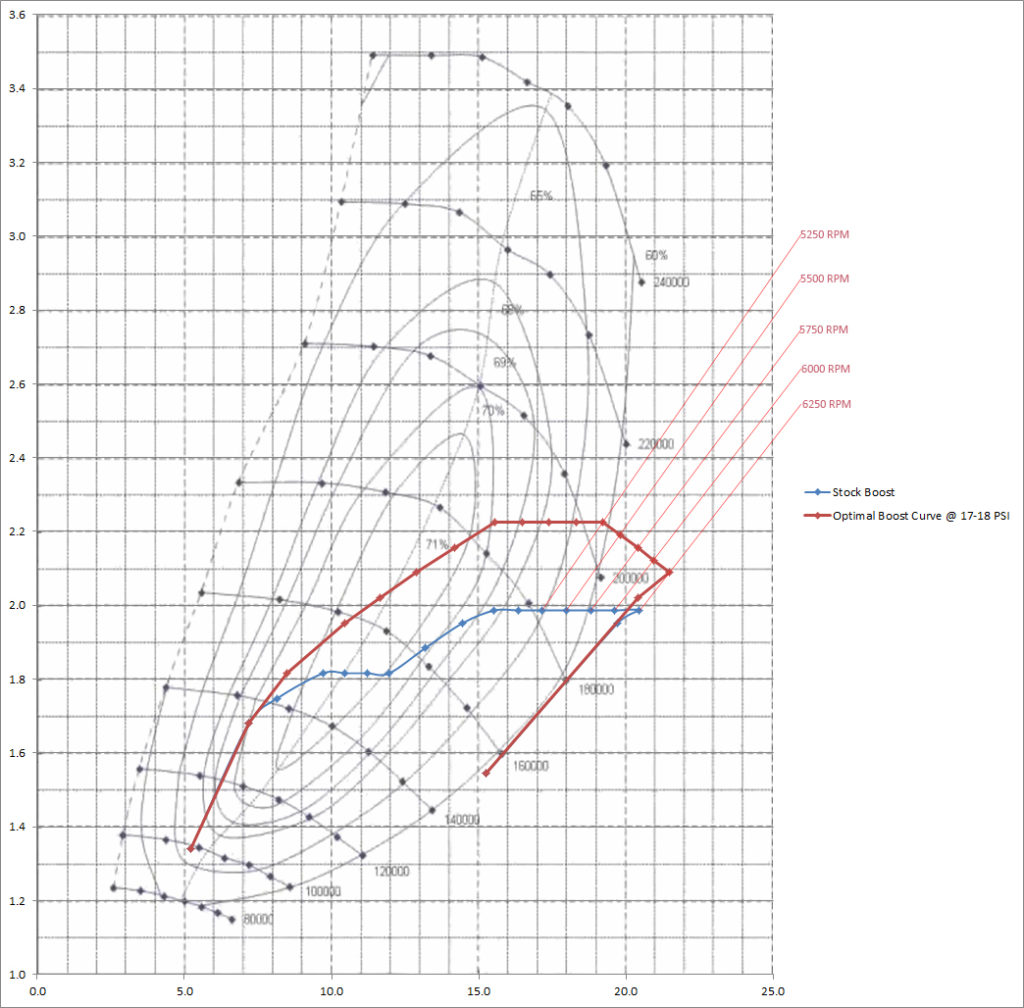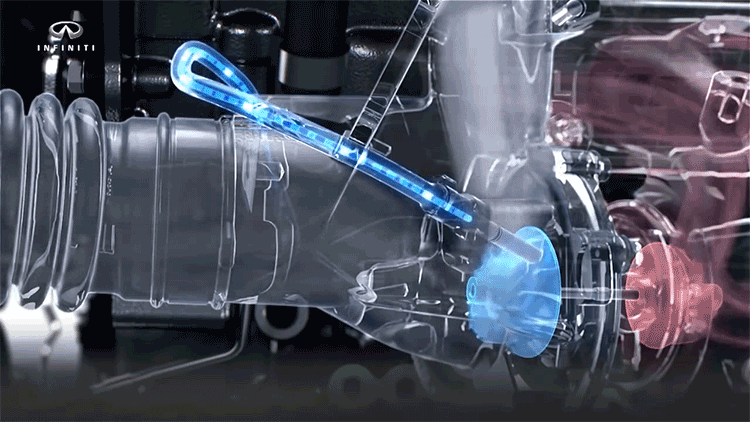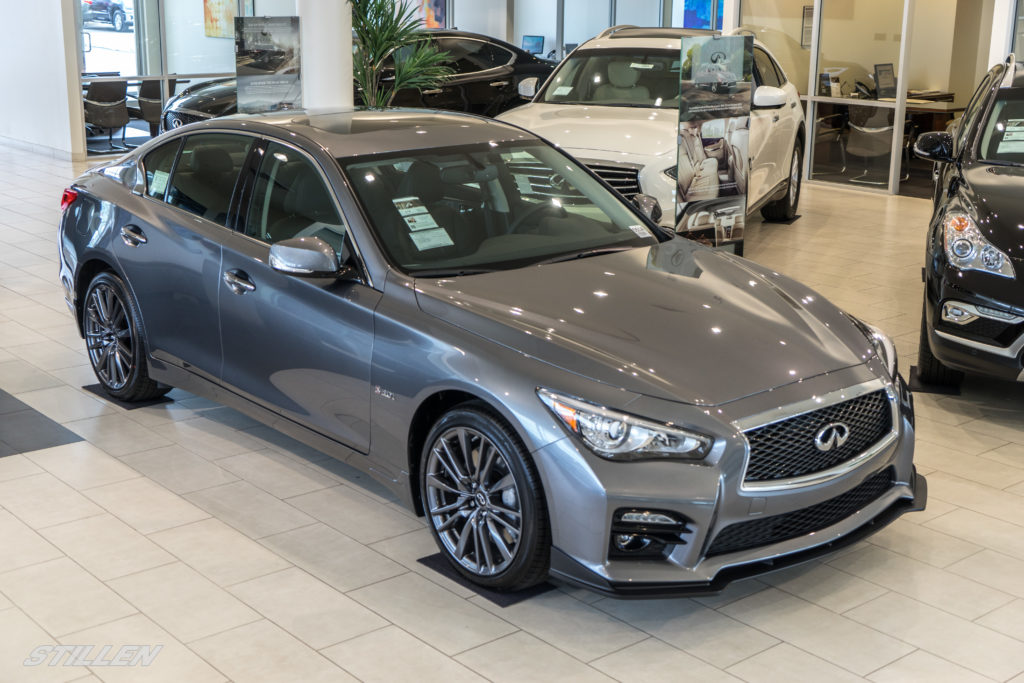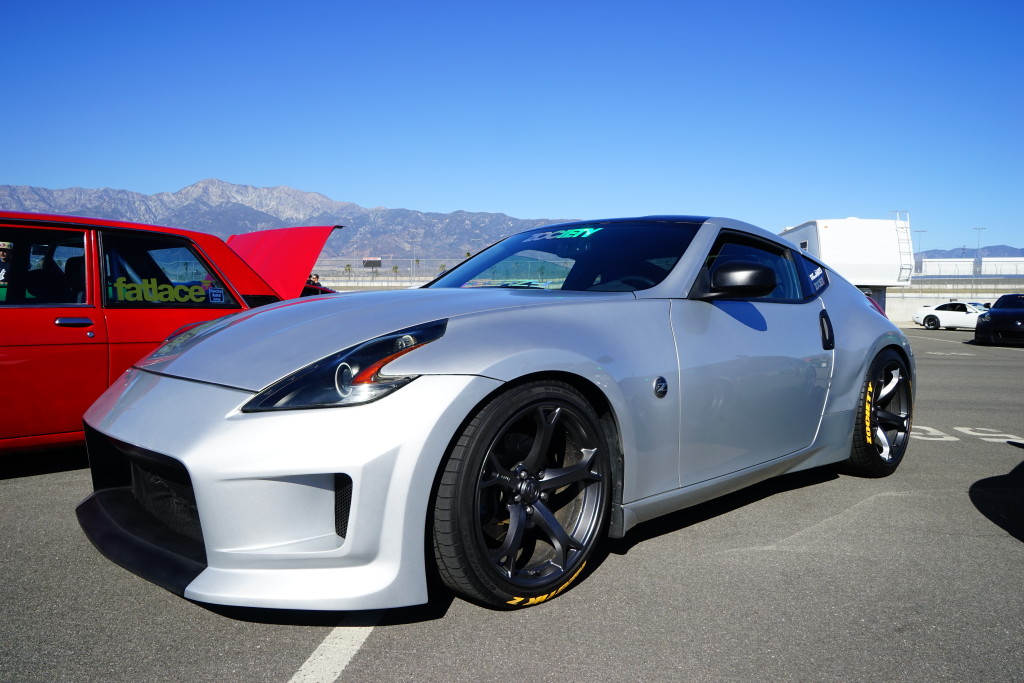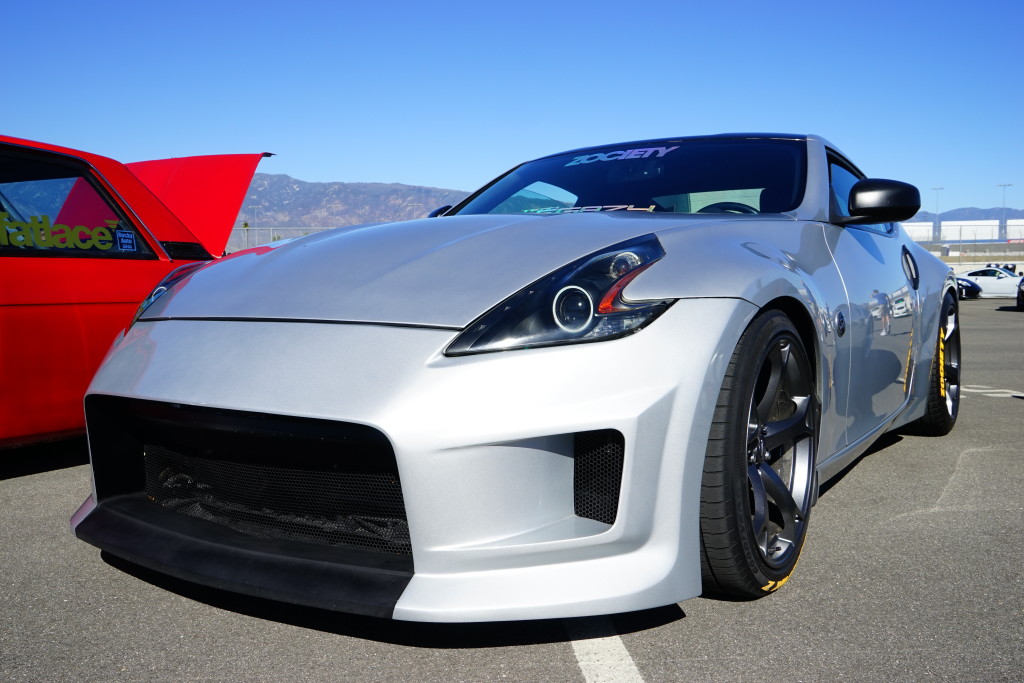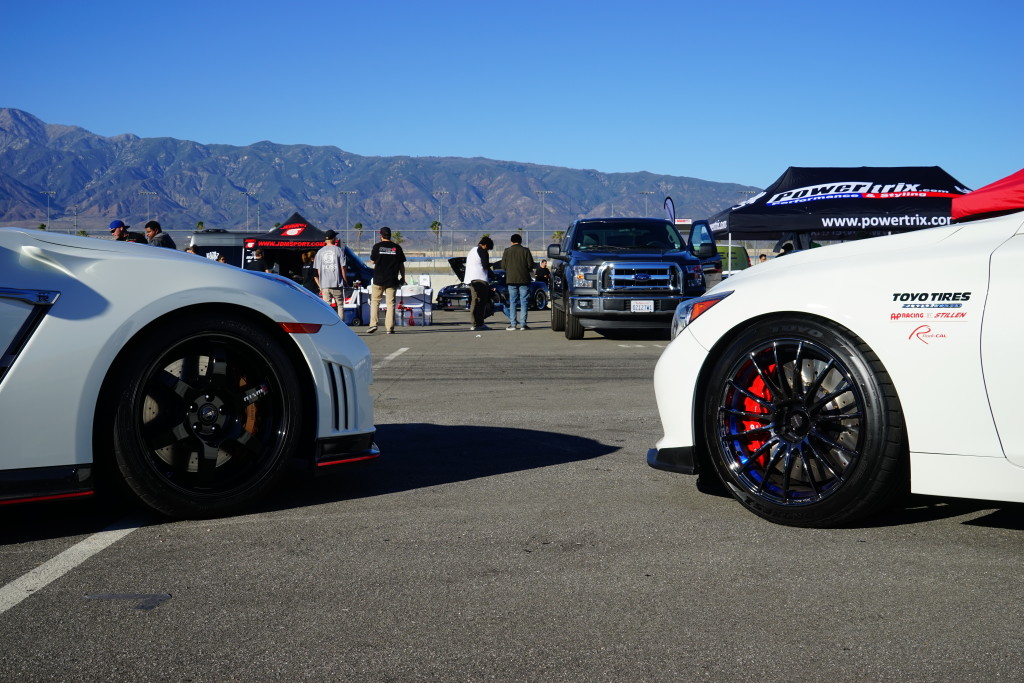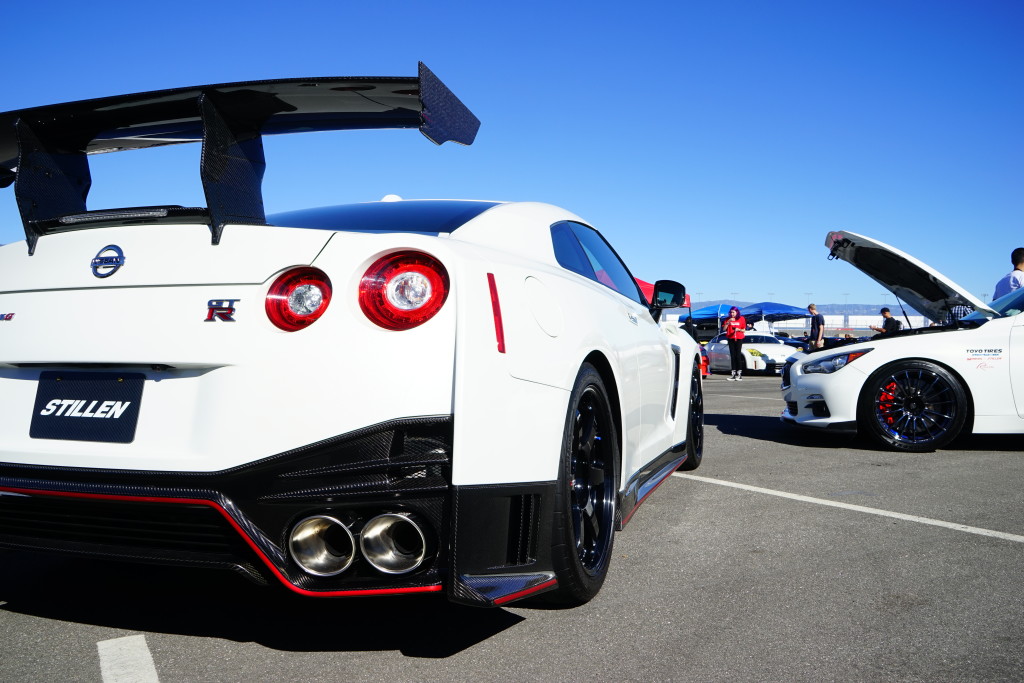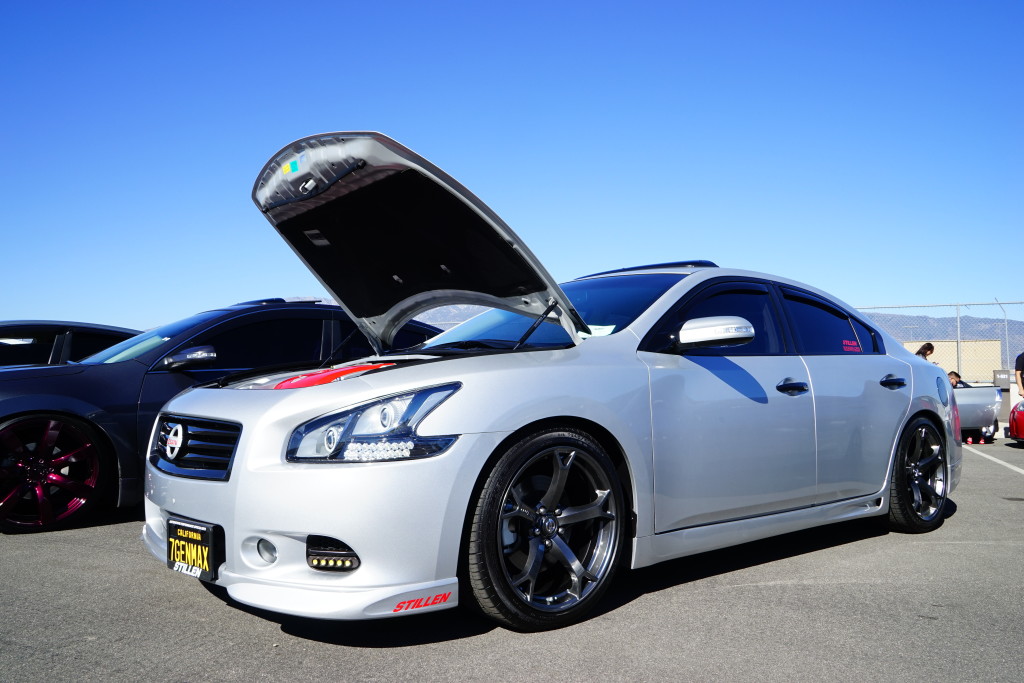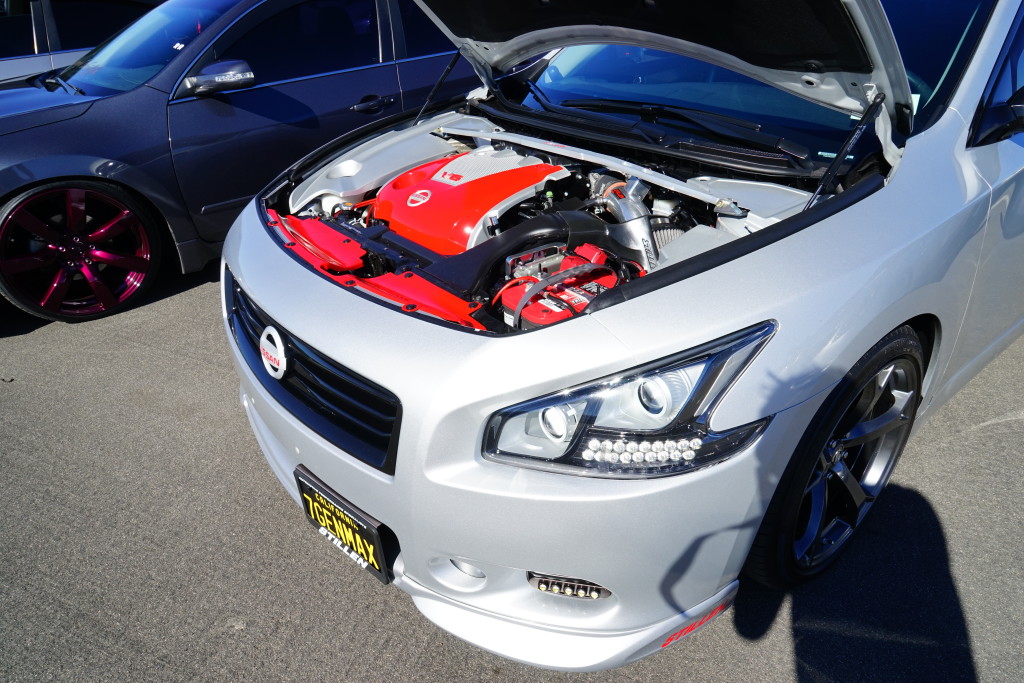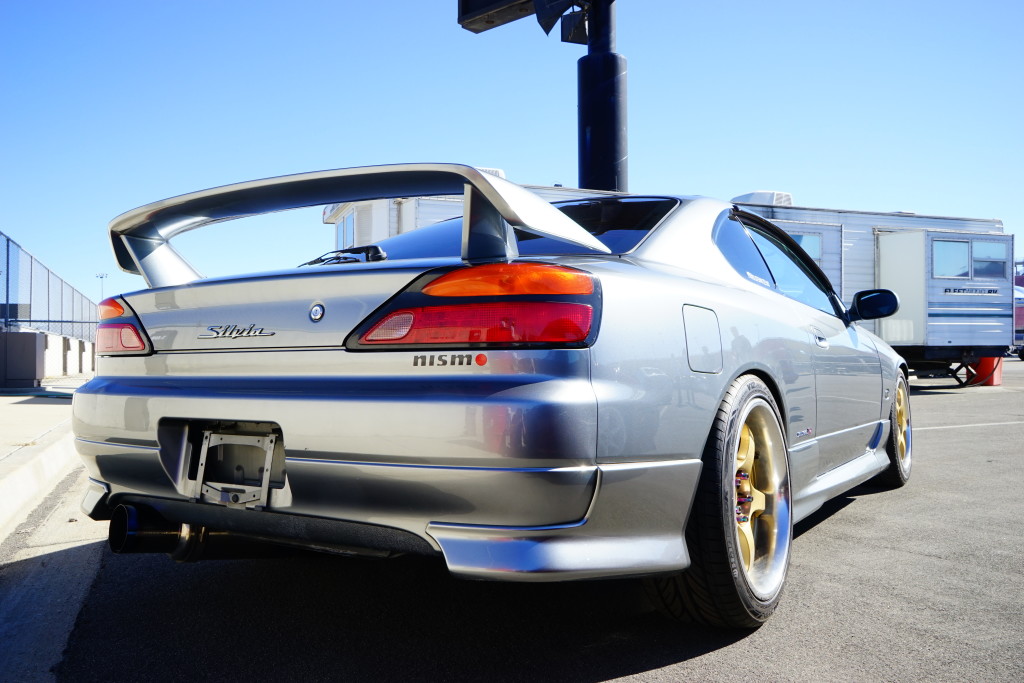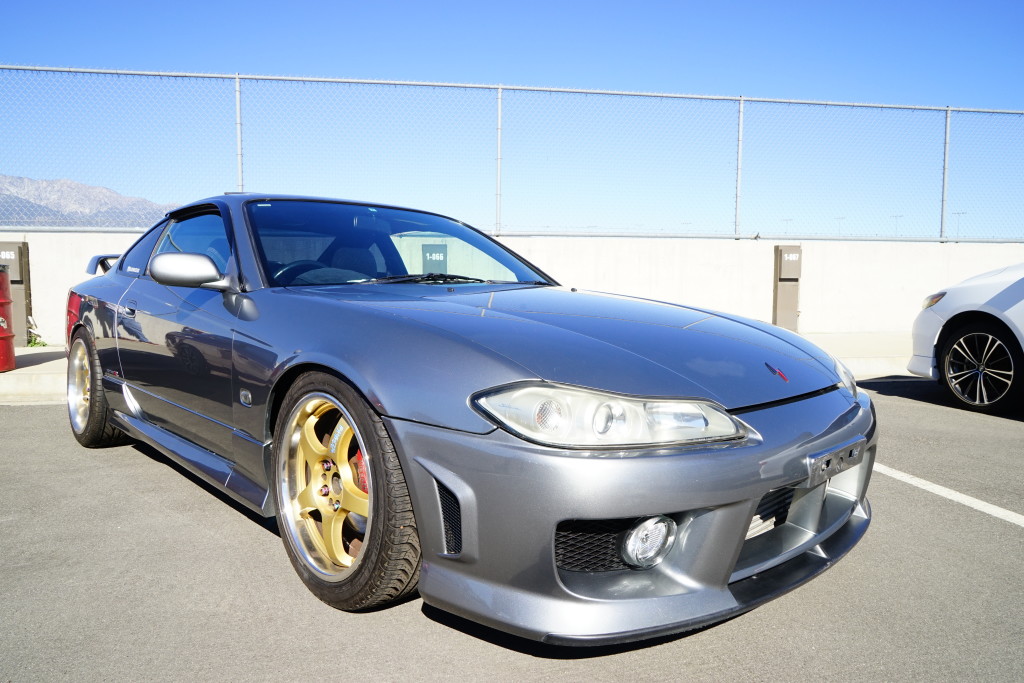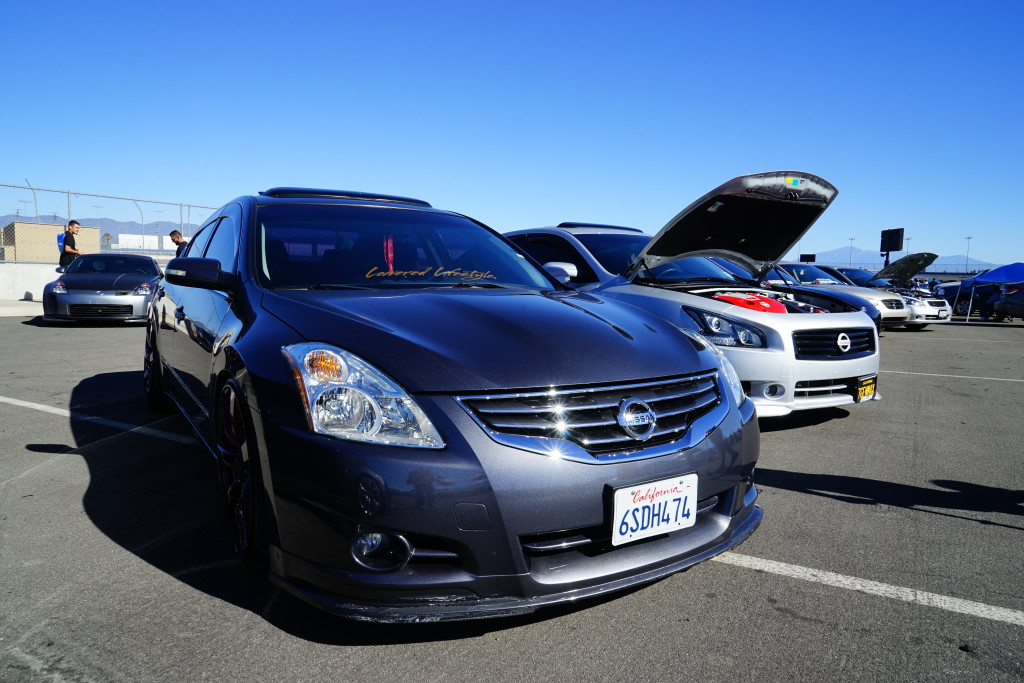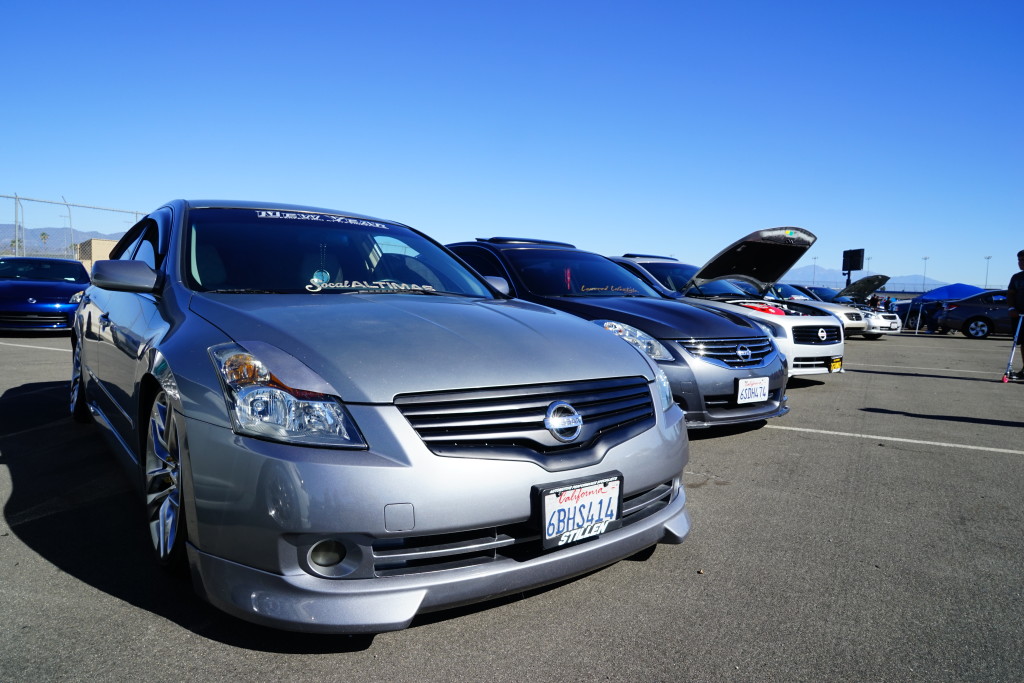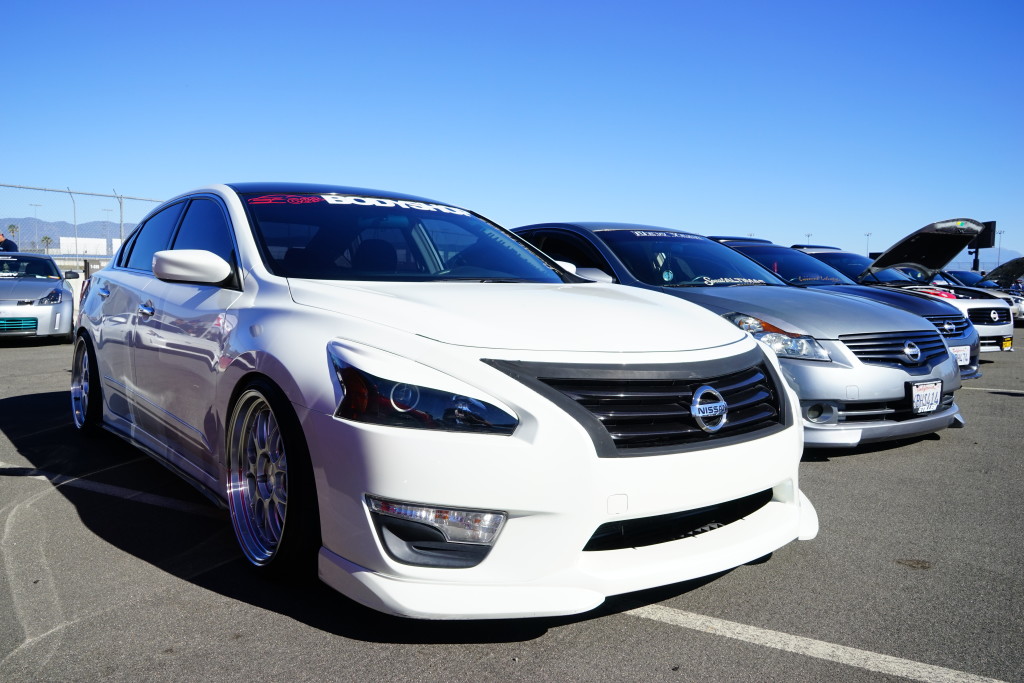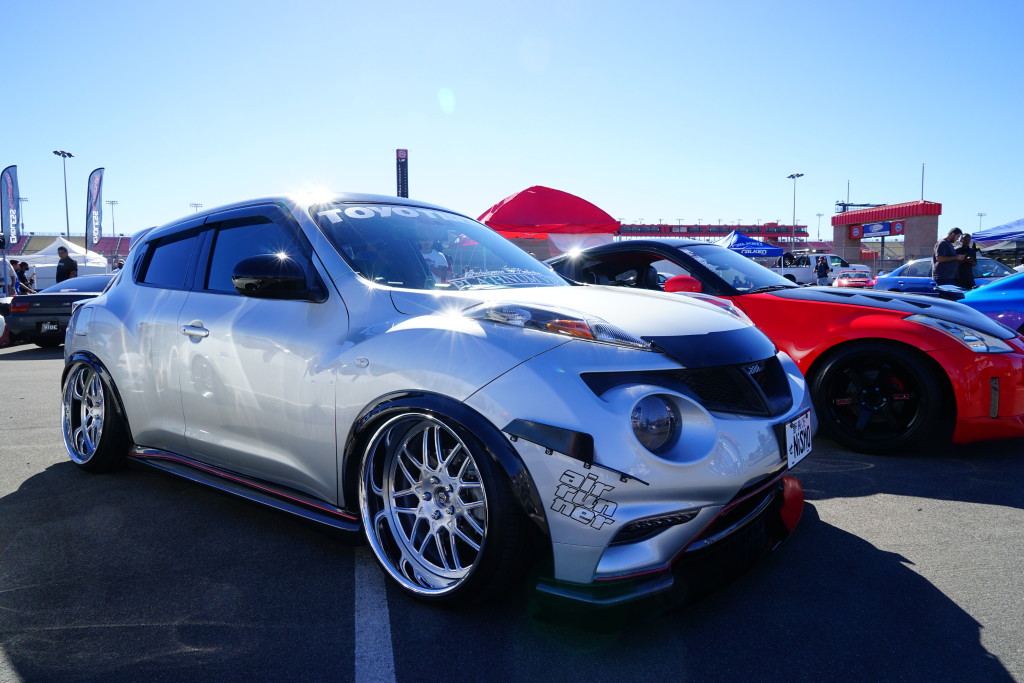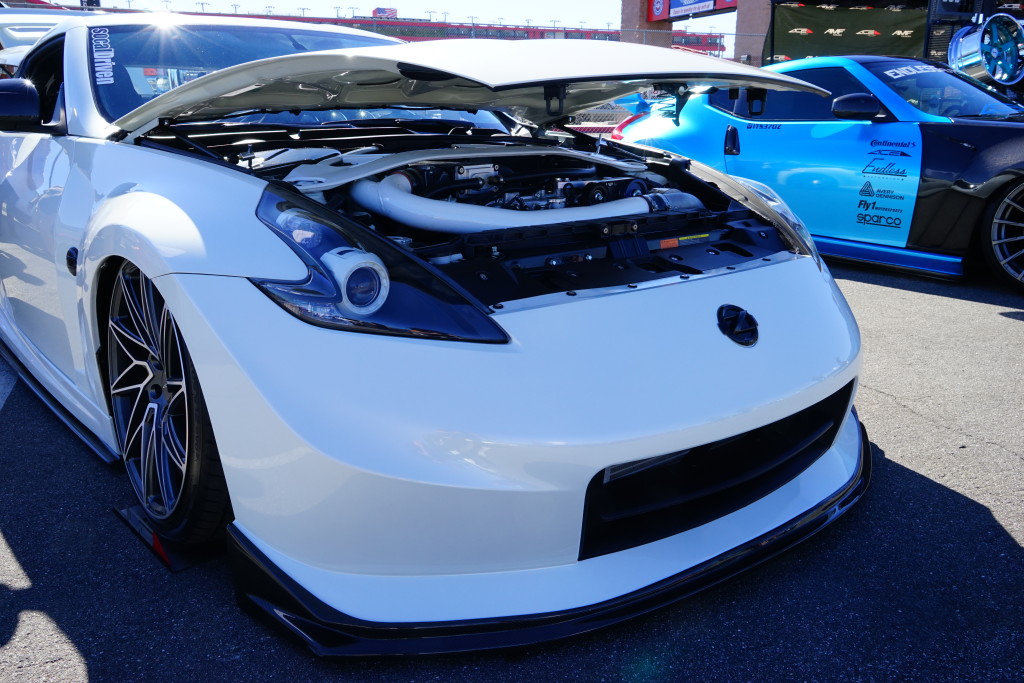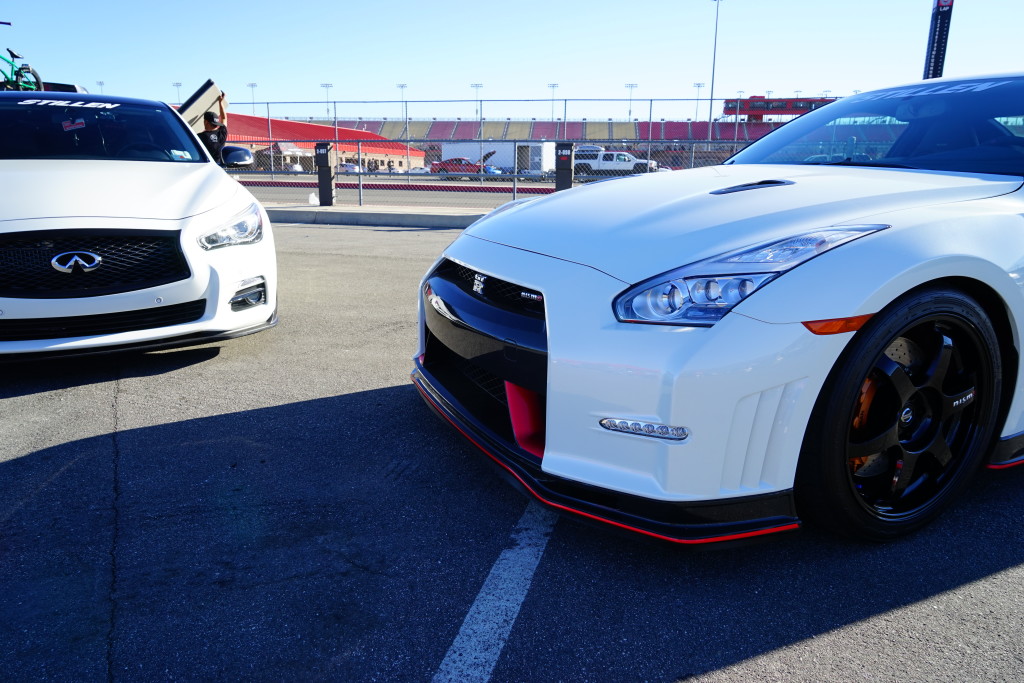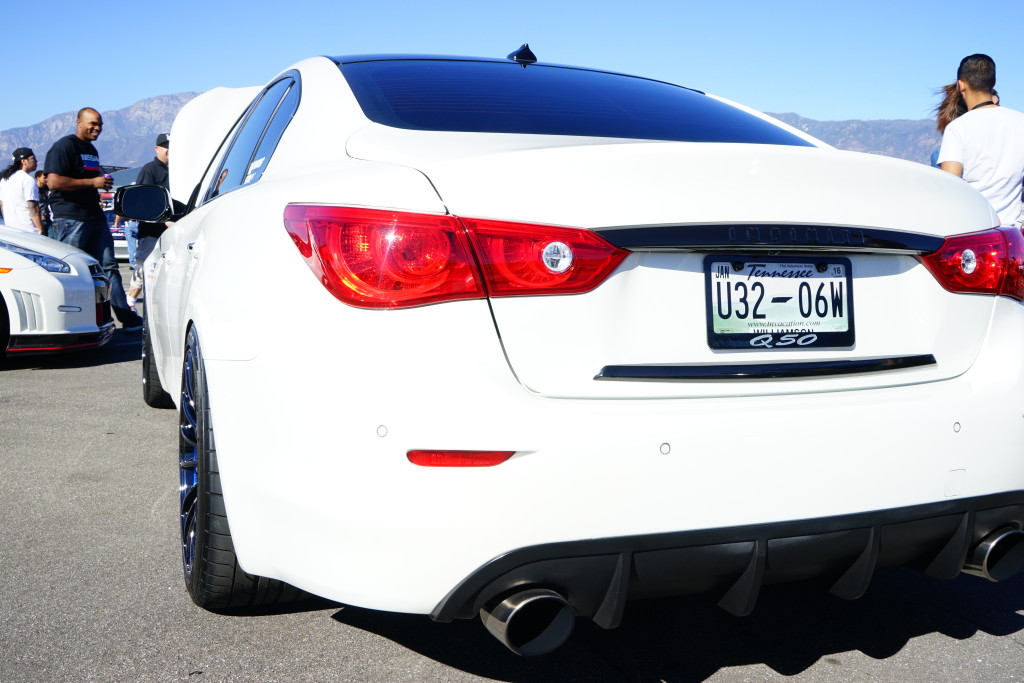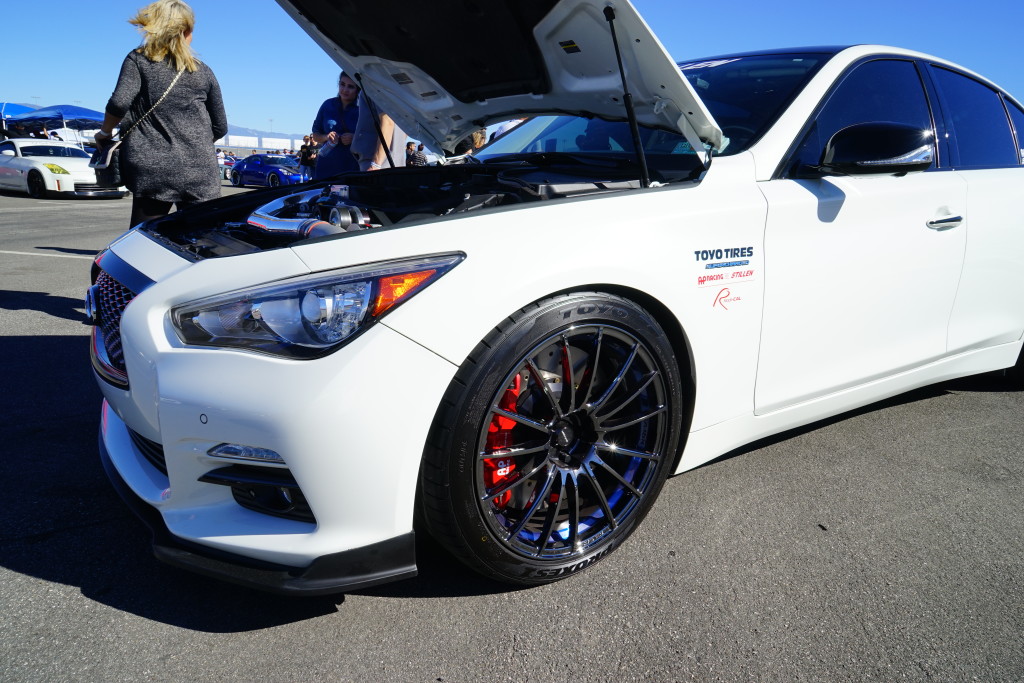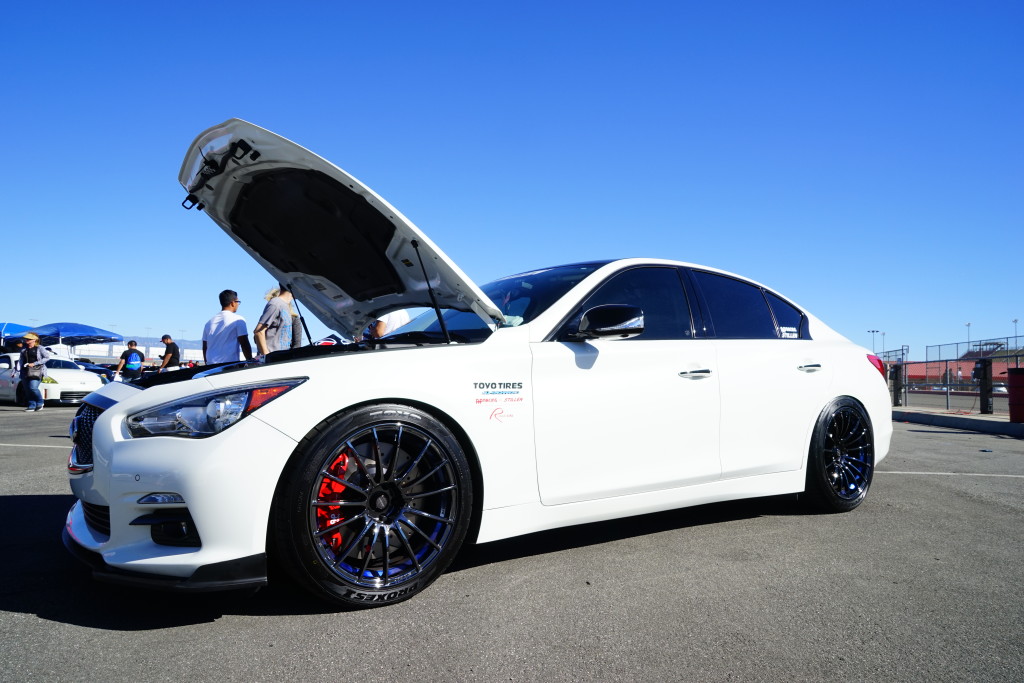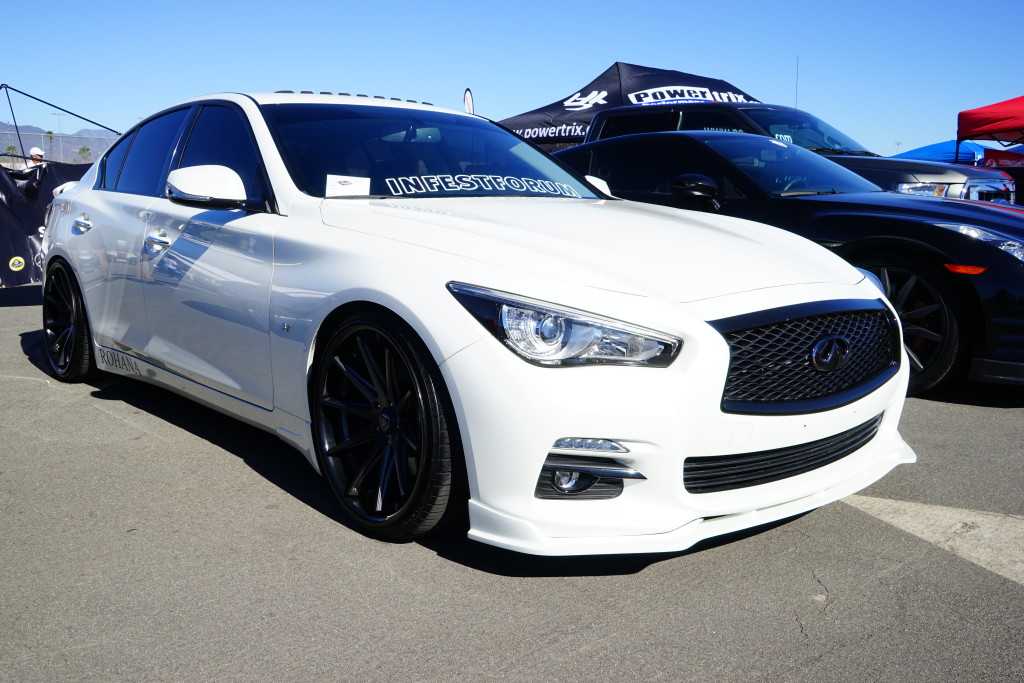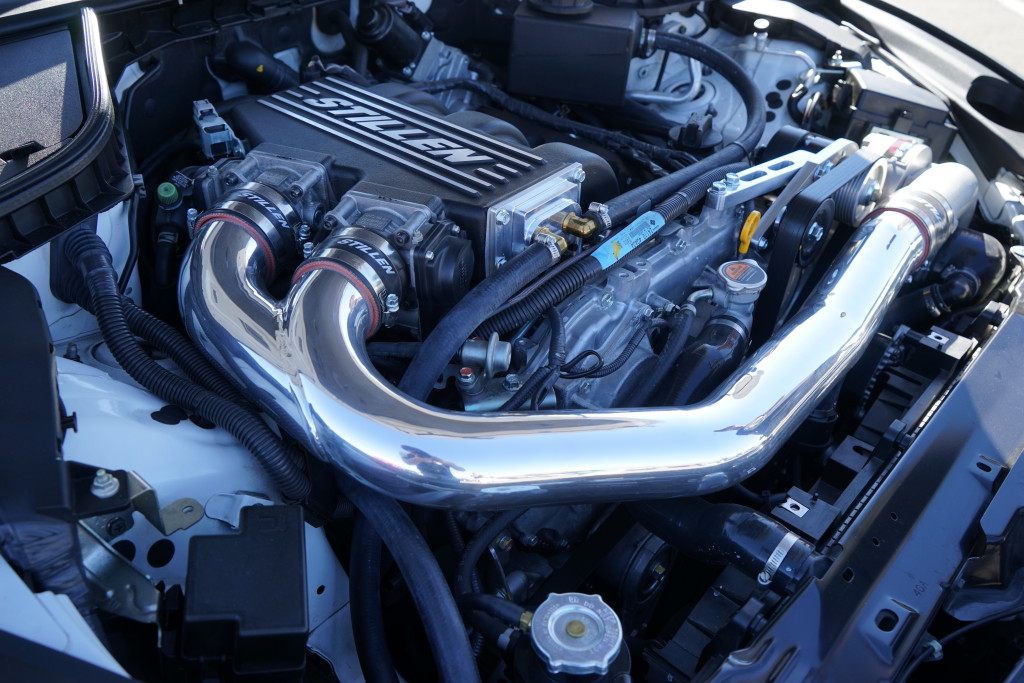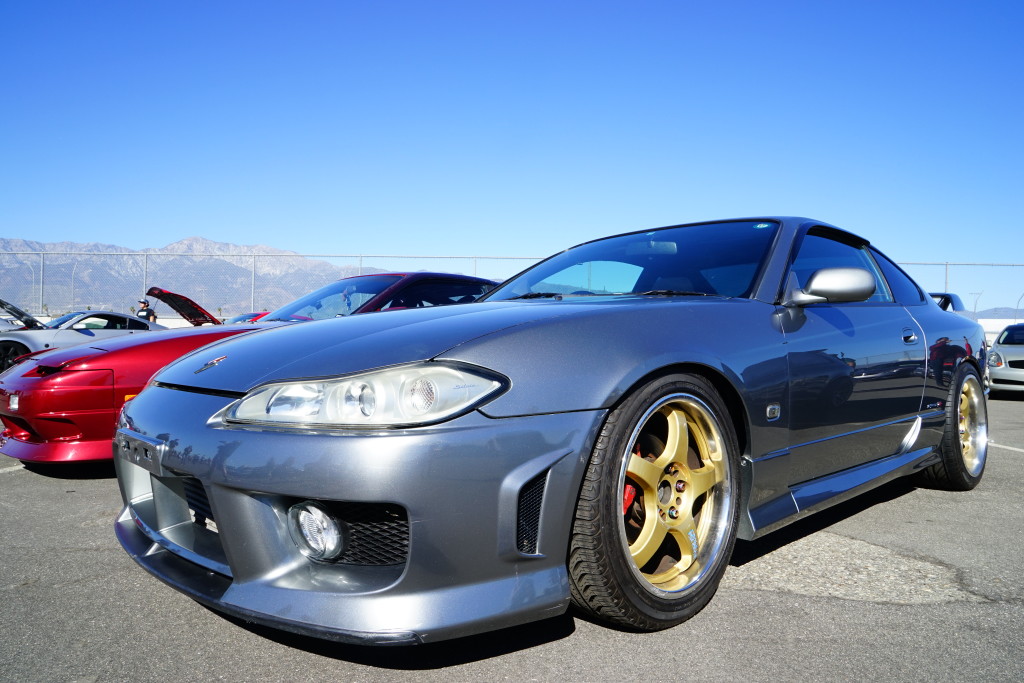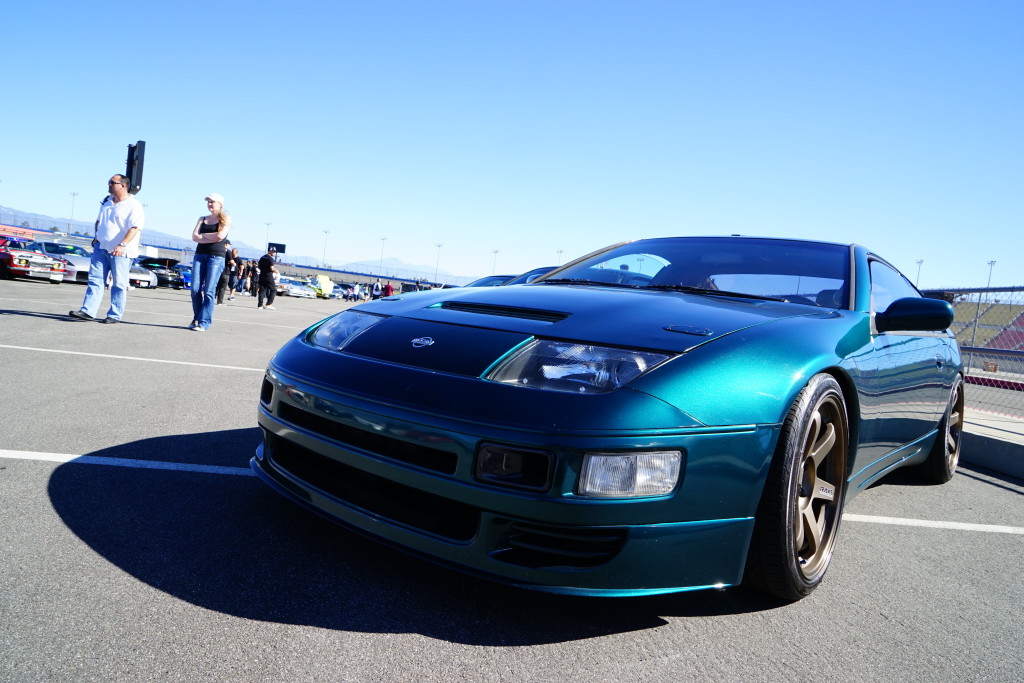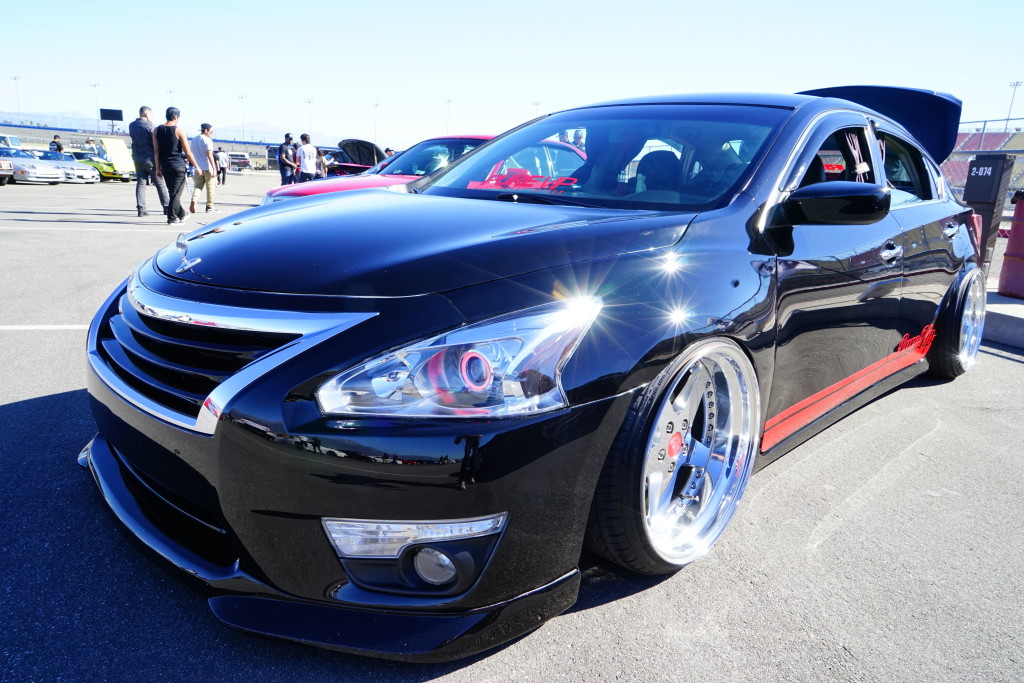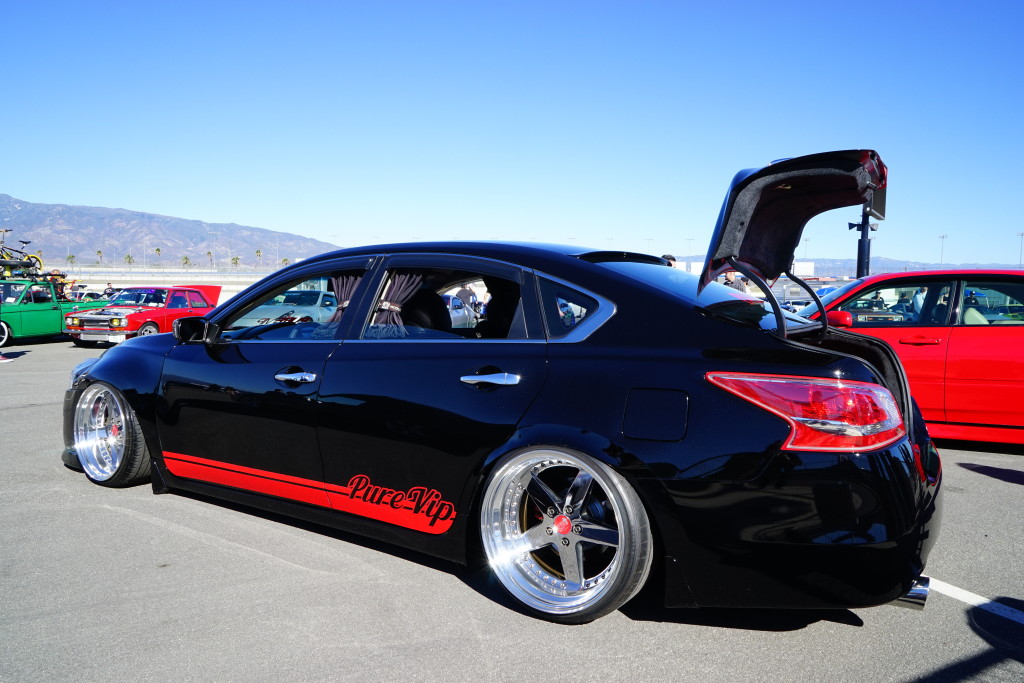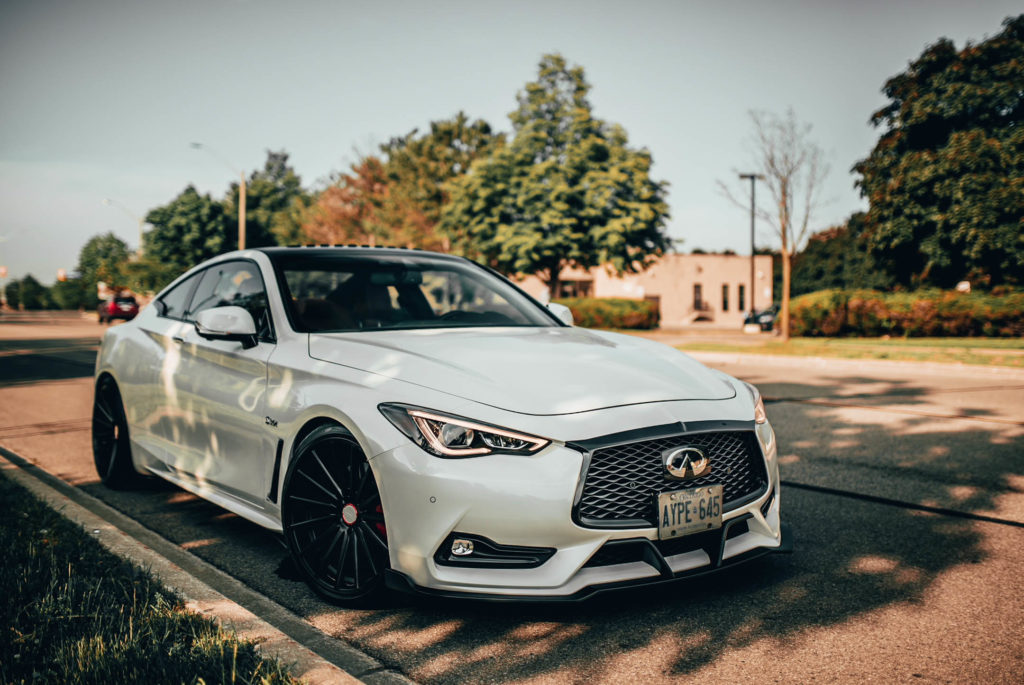
STILLEN Front Splitter + Winglets / STILLEN Rear Diffuser
Vossen VSF2 20×9.5et25 / 20×10.5et25 with Yokohama ADVAN V105 245/35-20 / 275/30-20 on RS-R SuperDown Springs
Sporting the a smorgasboard of STILLEN Q60 mods, Deryck G’s 2017 Infiniti Q60 RS AWD is certainly a sight to behold. The Q60 is already a gorgeous vehicle, but the addition of STILLEN Aero and performance upgrades really makes this Infiniti Q60 RS especially slick. Starting with the ivory white exterior, Deryck has some great contrast going on between the matte black trim, aero and wheels against the crisp white of the body.
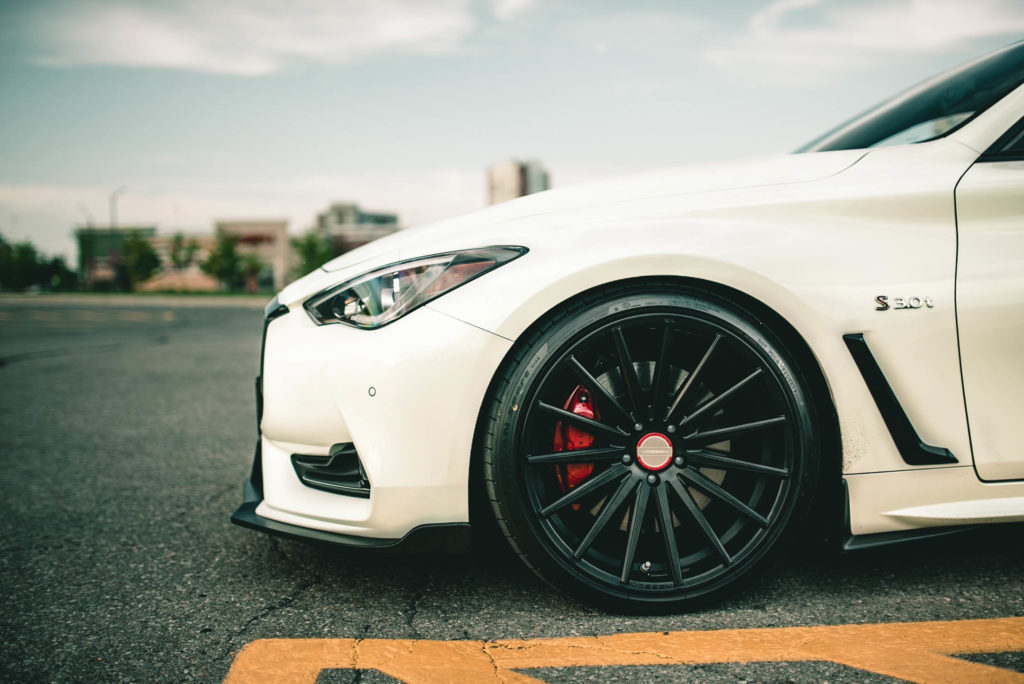
STILLEN Front Splitter + Winglets
Vossen VSF2 20×9.5et25 / 20×10.5et25 with Yokohama ADVAN V105 245/35-20 / 275/30-20 on RS-R SuperDown Springs
To give the Infiniti Q60RS the low slung stance a curvaceous coupe like it deserves, Deryck opted to drop the Q60 Suspension with a set of SuperDown Springs from RS-R. A more conservative option than a coilover, yet a better stance and better handling than stock. The blacked out grilles and fender trim really drives the theme home, creating a cohesive look – everything looks like it belongs, nothing jarring and out of place. It’s exquisite.
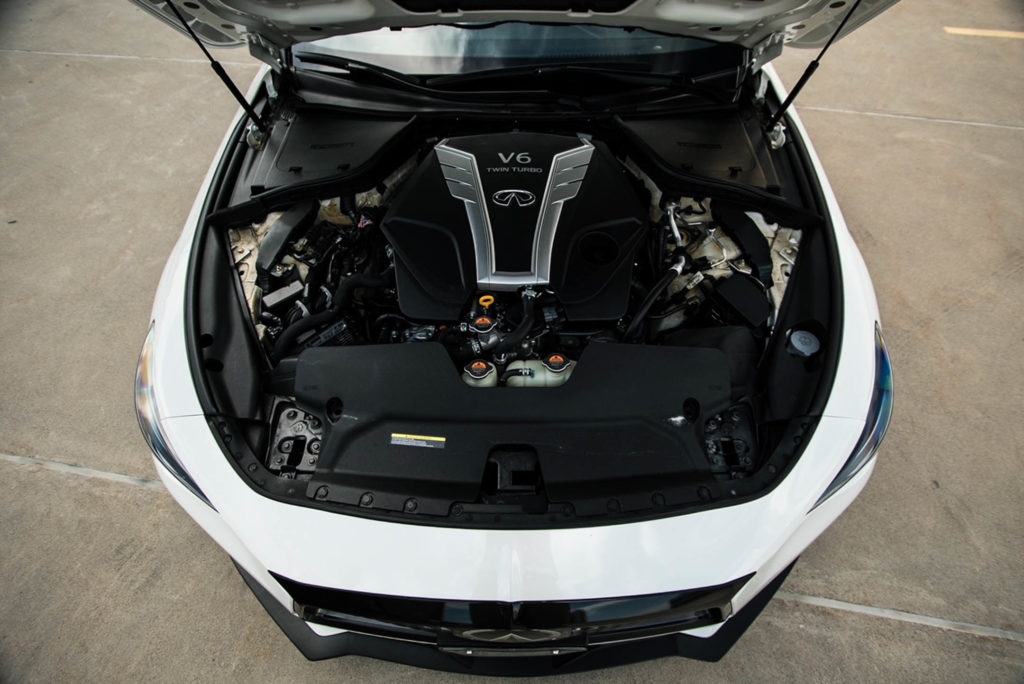
STILLEN Front Splitter + Winglets / STILLEN Intakes for Infiniti Q60 3.0tt
Bolstering the already impressive 400hp output of the Q60 RS VR30DDTT are a set of STILLEN Air Intakes, one feeding each bank of cylinders. While RedSport models don’t pick up near as much power as SilverSports with our intakes, response is sharper and the induction note is so much more satisfying. Featuring two high flow conical filters and custom-fabricated MAF tube sections mated to contoured high-temperature urethane heat shields.
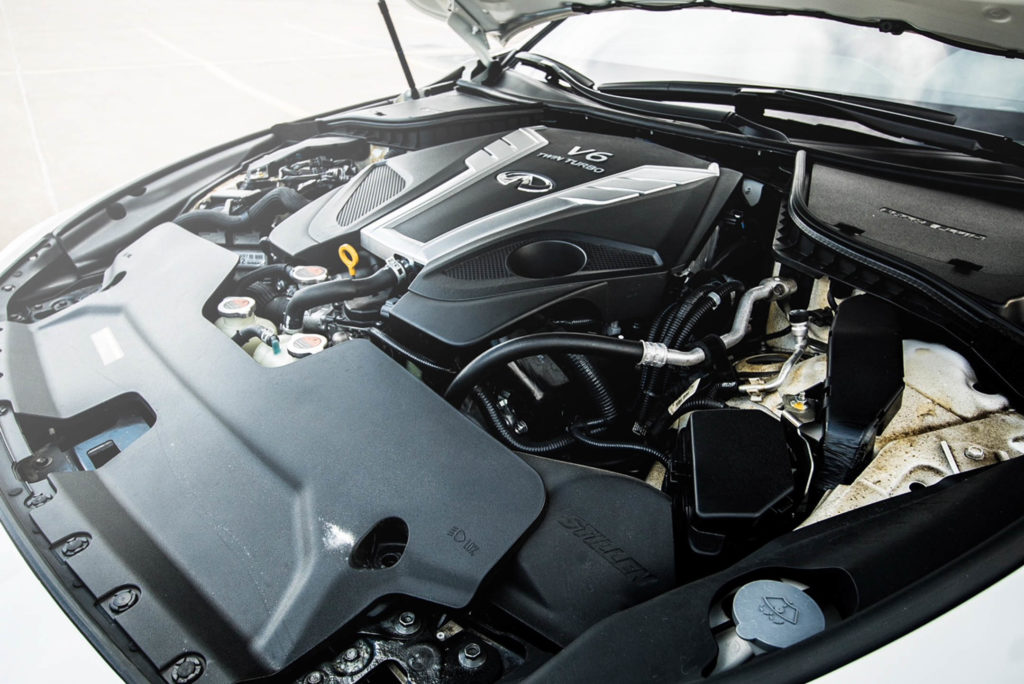
STILLEN Intakes for Infiniti Q60 3.0tt
Whereas many competing aftermarket intake systems aren’t shielded at all, the ones that do are mostly using metal heat shields. Urethane offers superior thermal insulation, while metal is a thermal conductor and the heat shield itself will get hot, which can result in a heat-soaked condition on hot days. Well-insulated, closed-box or semi-sealed box intakes perform much more consistently in traffic and in hot weather, as it helps keep intake temperatures lower and more consistent. Some may argue that “intake temperature doesn’t matter because the intercooler will cool the aircharge anyway”, but that’s not true. The intercooler can get the air-charge colder if it starts with a colder incoming air-charge.
The TL;DR: is lower inlet air temperatures result in lower air charge temps at the throttle.
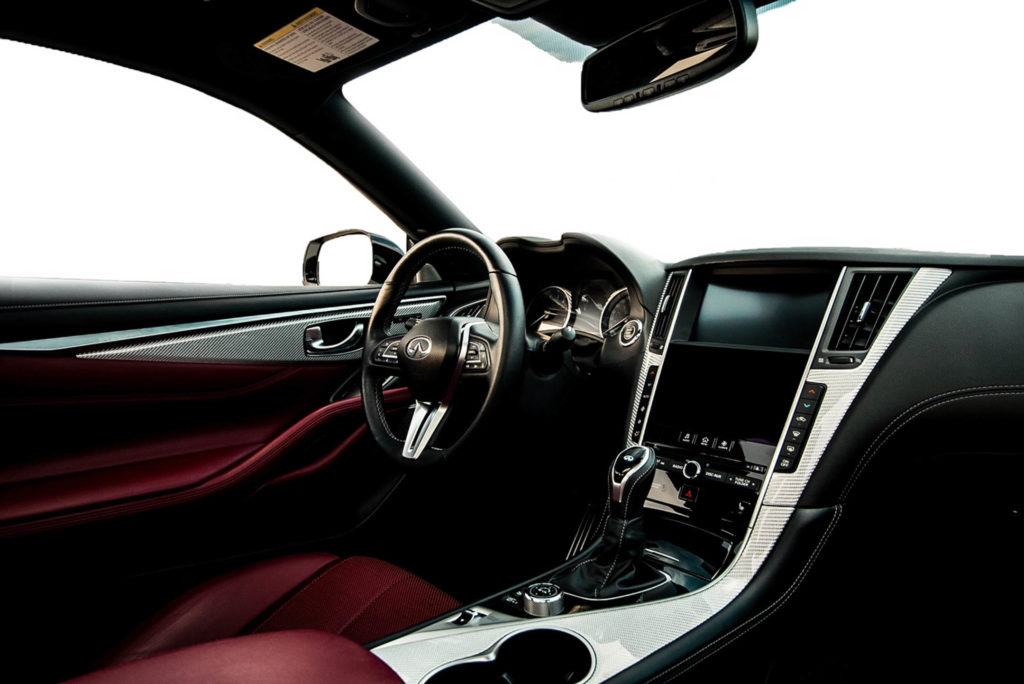
The interior is stock for the moment, but the color combination is stellar – and really, there isn’t much you can improve upon – it’s a nice place to be.
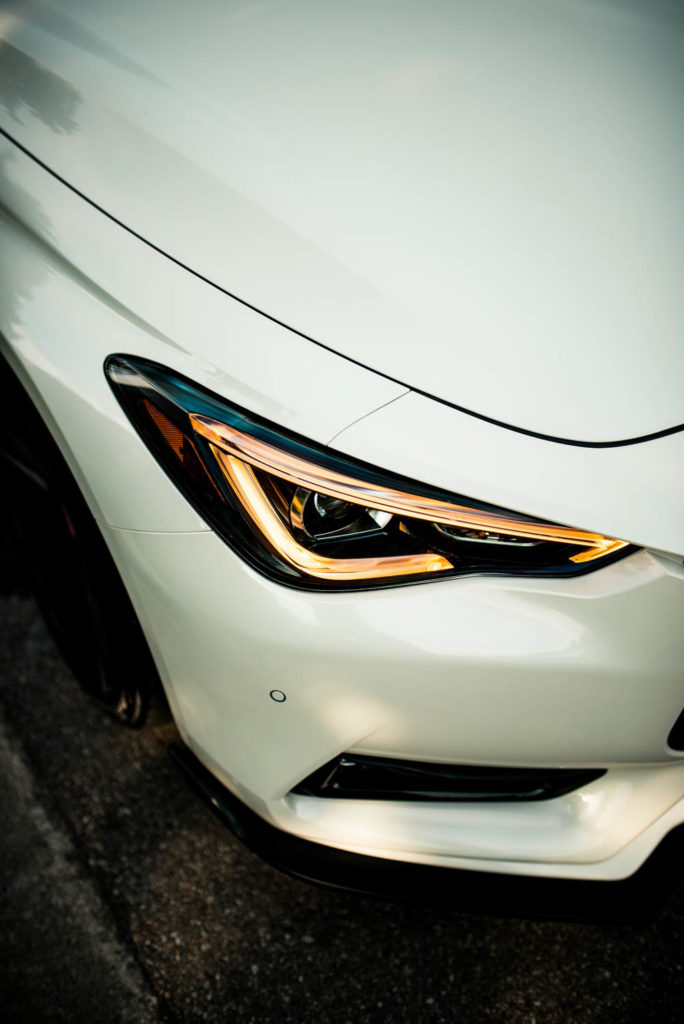
STILLEN Front Splitter + Winglets
The subtle aero and details add a splash of drama to the car’s somewhat sedate factory aesthetic – sleek and graceful yet aggressive, not unlike an F-22 Raptor fighter jet – whereas other combat aircraft that bristle with firepower have bulky hardpoints hanging off their wings and undercarriage, on the F-22, its impressive complement of missiles and such are stealthily tucked away for an extraordinarily clean profile in every regard – on radar, aesthetically and aerodynamically.
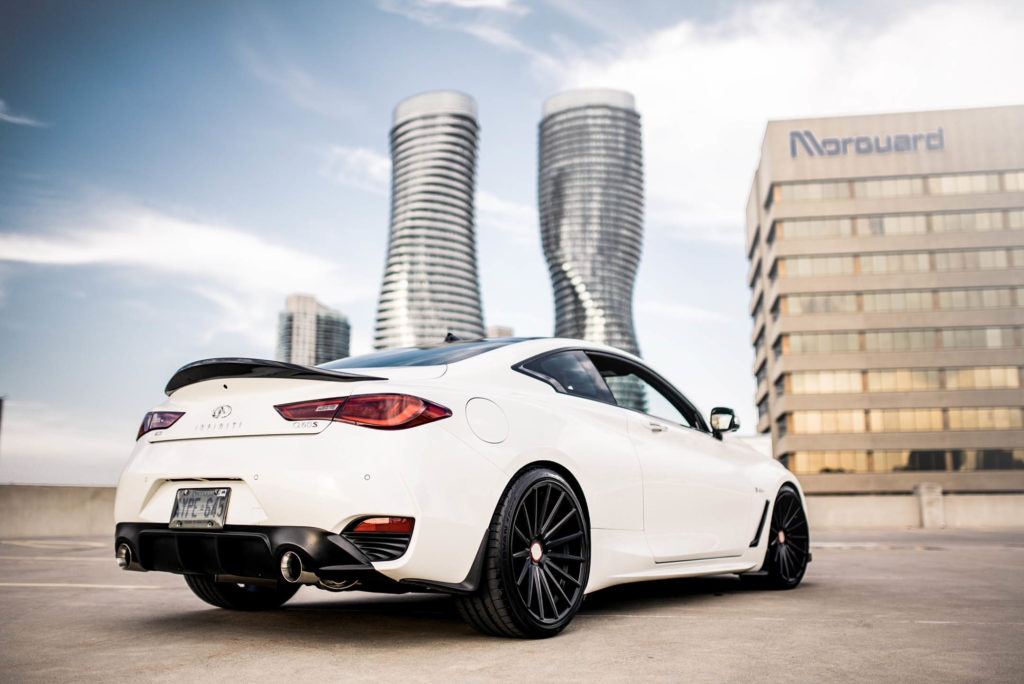
STILLEN Rear Diffuser / Armore Design Rear Carbon Fiber Duckbill Spoiler / Vibrant Exhaust for Q60
It’s all the smaller details that make the finished package look as good as it does. Dressing up the tail of the car is an Armore Design CF Duckbill spoiler, paired with the STILLEN rear diffuser. Polished oversized tips of a custom-fabricated Vibrant catback exhaust for Q60 fill out the openings in the rear fascia, framed by the STILLEN Rear Diffuser for Q60.
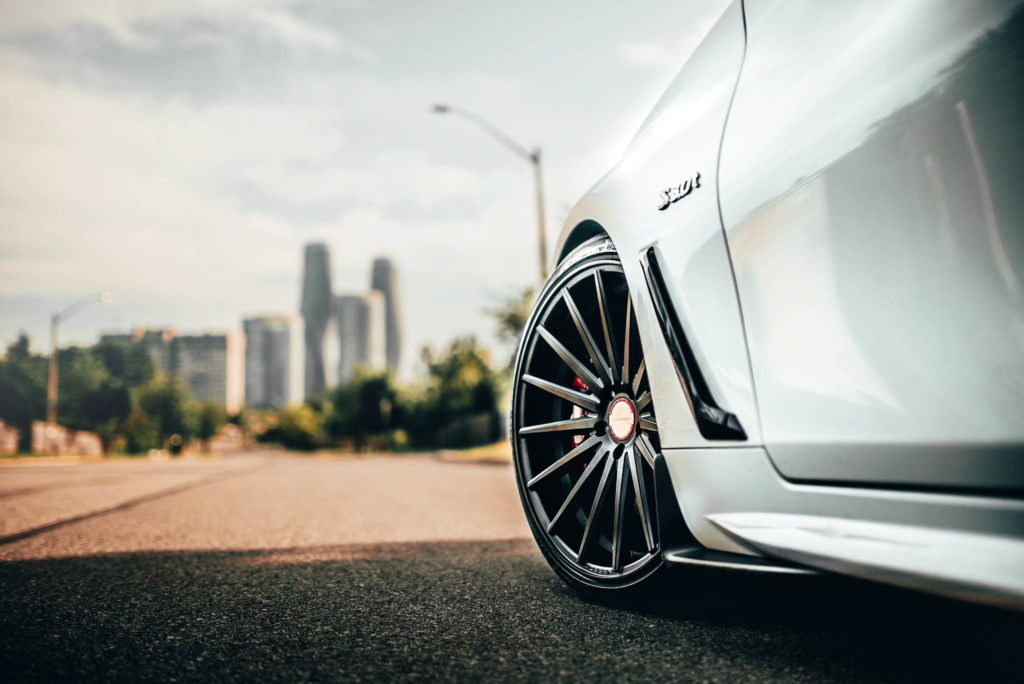
STILLEN Front Splitter + Winglets / STILLEN Rear Diffuser
Vossen VSF2 20×9.5et25 / 20×10.5et25 with Yokohama ADVAN V105 245/35-20 / 275/30-20 on RS-R SuperDown Springs
Somehow, this car just oozes charisma and manages to make the Q60’s already supple curves that much more enticing, and the play of light across each surface that much more beautiful.
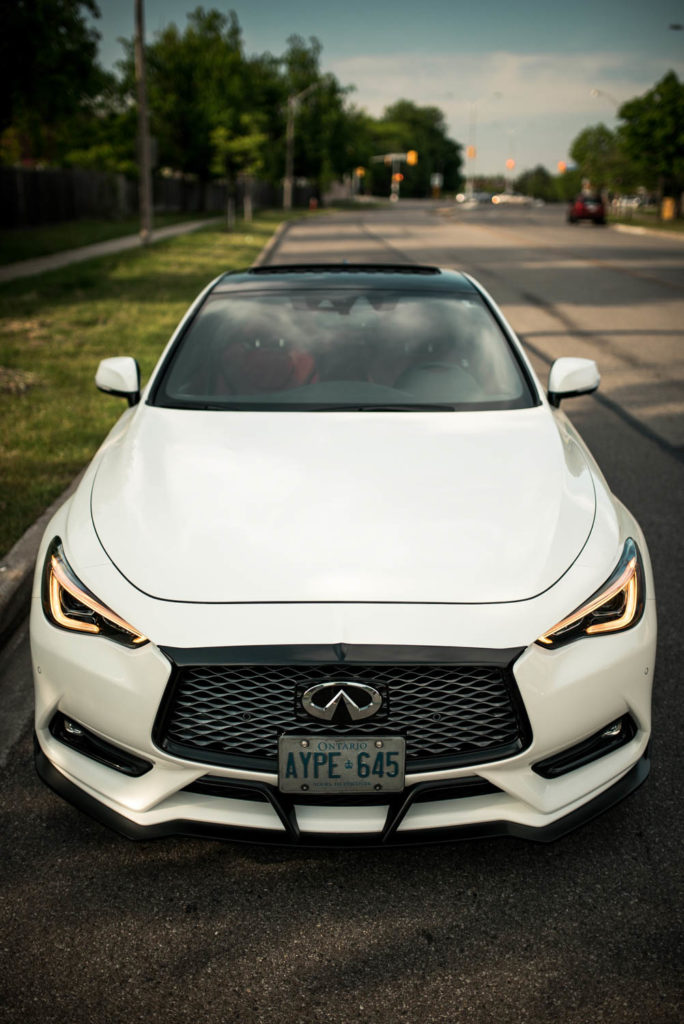
STILLEN Front Splitter + Winglets
The trifecta of the matte black grille, the matte black STILLEN Q60 Front Splitter and STILLEN Q60 Winglets with the blacked out front grille works together brilliantly, pairing like a great red wine and artisan-made cheese.
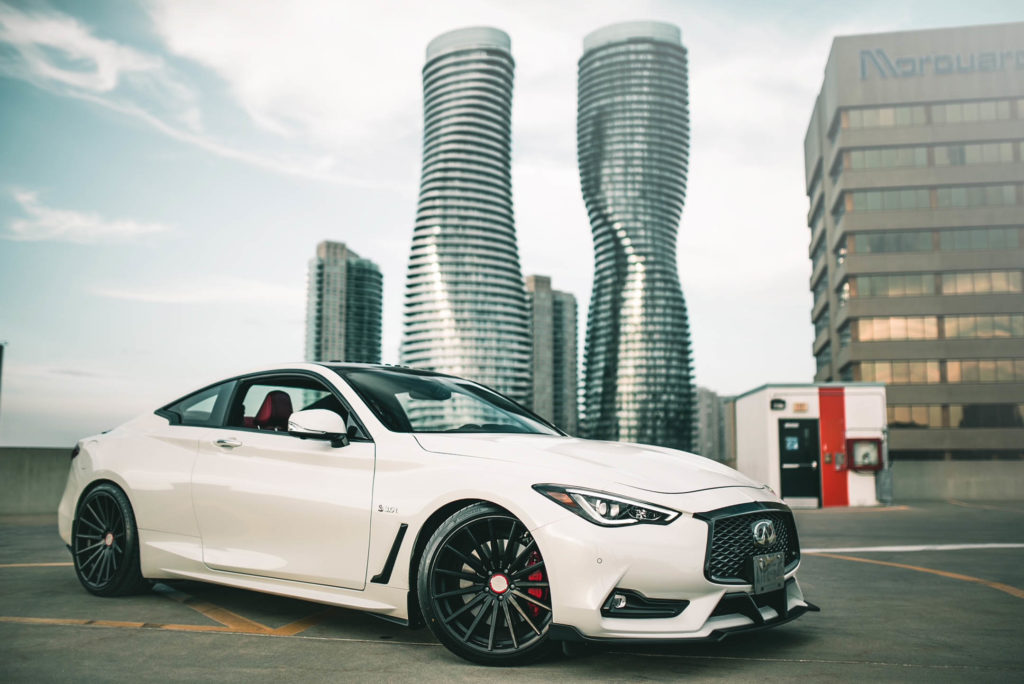
STILLEN Front Splitter + Winglets / STILLEN Rear Diffuser
Vossen VSF2 20×9.5et25 / 20×10.5et25 with Yokohama ADVAN V105 245/35-20 / 275/30-20 on RS-R SuperDown Springs
There’s only so much we can say, because these photos do an excellent job speaking for themselves. Check out a few more incredible photos of this crisp-linen colored beauty.

STILLEN Rear Diffuser / Armore Design Rear Carbon Fiber Duckbill Spoiler / Vibrant Exhaust for Q60
Vossen VSF2 20×9.5et25 / 20×10.5et25 with Yokohama ADVAN V105 245/35-20 / 275/30-20 on RS-R SuperDown Springs

STILLEN Rear Diffuser / Armore Design Rear Carbon Fiber Duckbill Spoiler / Vibrant Exhaust for Q60
Giving the Q60 a unique exhaust note and even greater authority when you stomp the go pedal, the custom-fabricated Vibrant Performance Exhaust and Vibrant Performance High Performance downpipes wakes up the VR30DDTT like getting a bucket of water dumped on you while napping, offering snappier response and further enhanced horsepower and torque to all four wheels.
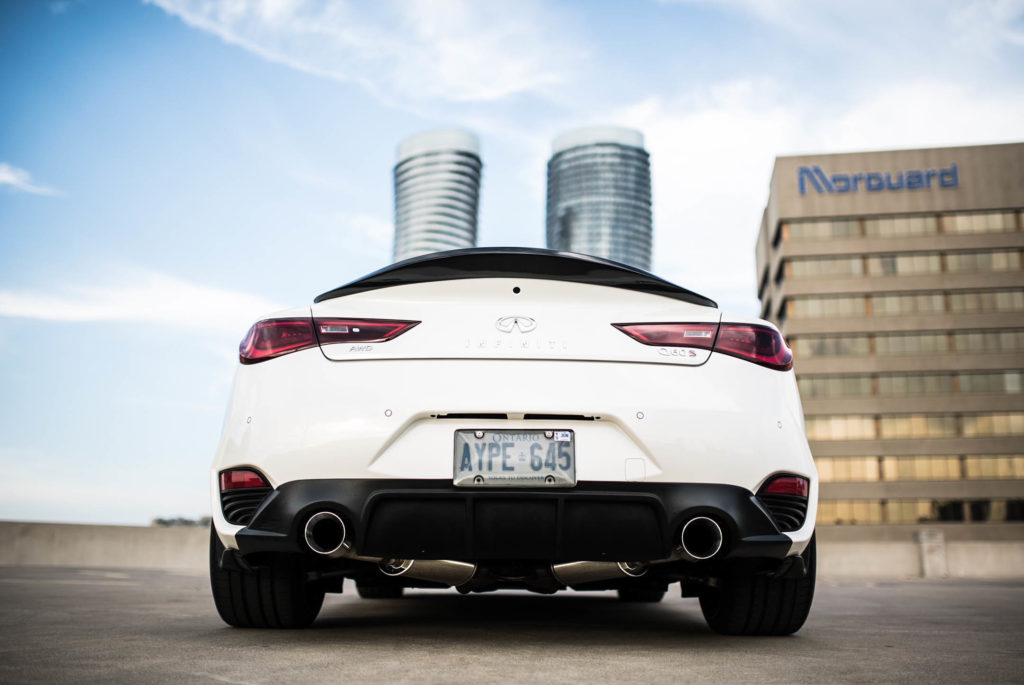
STILLEN Rear Diffuser / Armore Design Rear Carbon Fiber Duckbill Spoiler / Vibrant Exhaust for Q60
Vossen VSF2 20×9.5et25 / 20×10.5et25 with Yokohama ADVAN V105 245/35-20 / 275/30-20 on RS-R SuperDown Springs
Deryck has put together an Infiniti Q60RS that’s sure to turn heads everywhere – this is the kind of car that gets the valet to park your car prominently in the front row, and with a tasteful suite of modifications, this is a package that looks, sounds and performs better than stock without any of the ‘racecar compromises’ that degrade the car’s streetability, making it an incredibly satisfying drive.
Thank you to Deryck for making STILLEN a part of his build; shoutout to Arthur Malczewski for shooting and sharing these incredible photos with us. Thank you for reading, we hope you enjoyed this feature!
Feeling inspired? Want your car to look like this? Give our team of experts a call at 1-866-250-5542 or shop online and even chat live with the team at STILLEN.com. Thanks for joining us, and for those interested, check out the full mod list below.
Photos By
Arthur Malczewski
Full Mod List
Exterior
- Stillen Q60 Front Lip (Matte Black)
- Stillen Q60 Front Winglets (Painted Matte Black)
- Stillen Q60 Rear Diffuser (Matte Black)
- Vossen VSF2 Wheels – 20×9.5F ET25 / 20×10.5R ET25
- Yokohama Advan V105 Tires – 245 / 35-20 / 275 / 30-20”
- Blacked out chrome grille, window trim, fog light, side gills, blacked out roof
- Armore Design Rear Carbon Fiber Duckbill Q60 Trunk spoiler
Performance
- Stillen High Flow Intakes for Q60 3.0TT
- Custom-fabricated Vibrant Performance Cat-back Exhaust System
- Custom-fabricated Vibrant Performance GESI Ultra High Converters Down-Pipes
(note: car/owner not in USA, USA E P A/A R B regulations do not apply.)
Suspension

